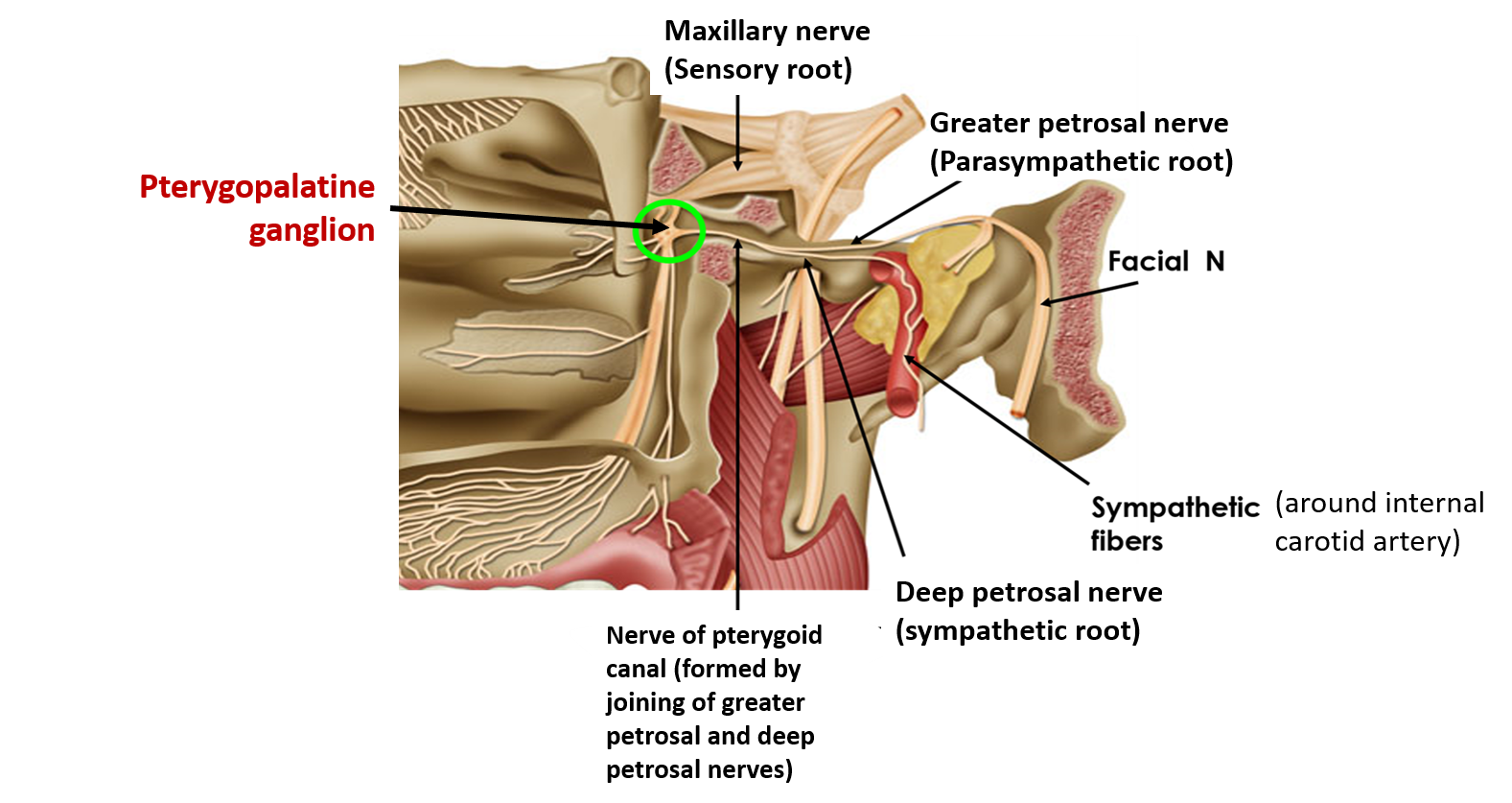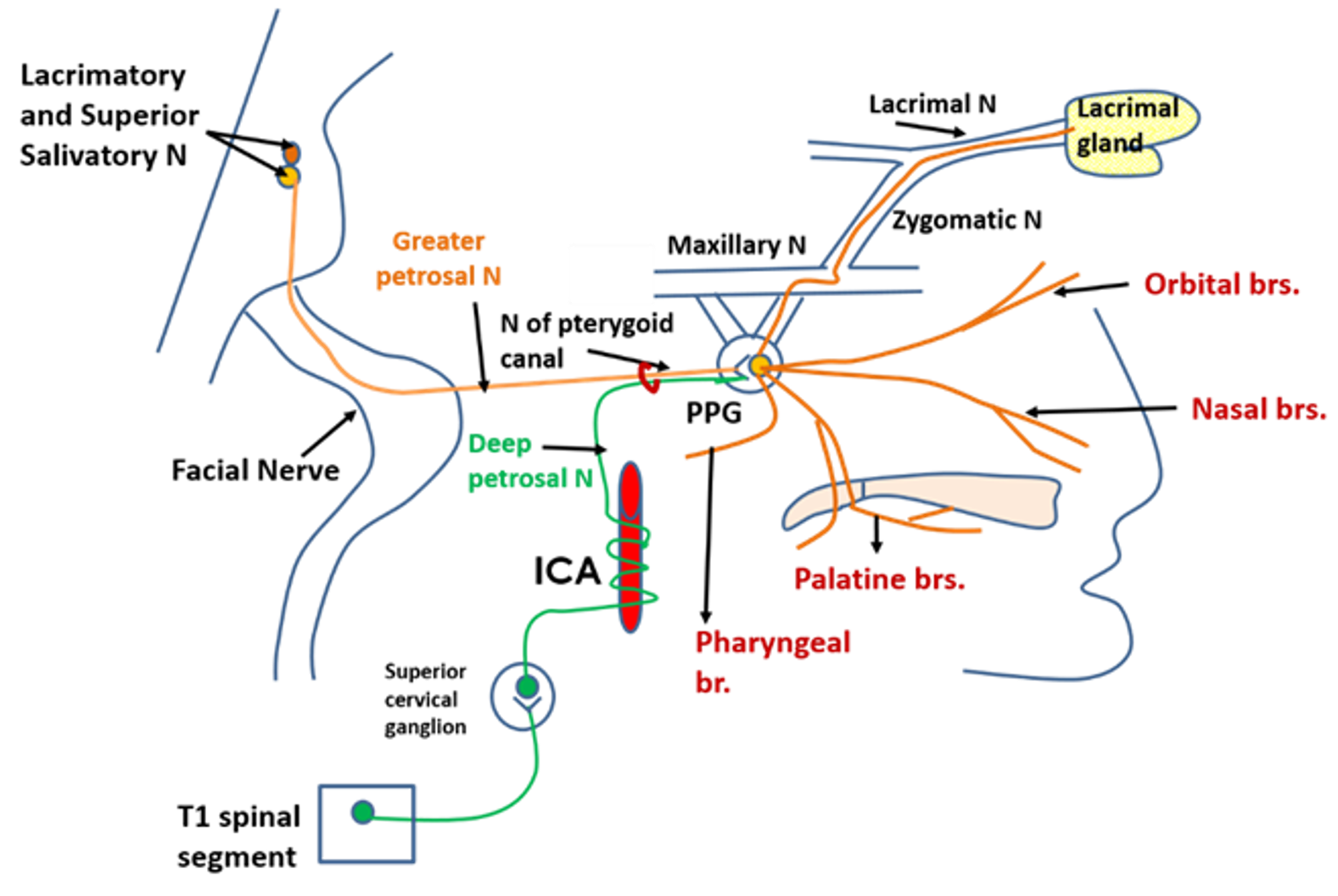![]() [expand title=”Show”]
[expand title=”Show”]
Pterygopalatine ganglion described under the following headings:
- Location
- Roots/connections
- Branches and structures supplied
- Applied Aspect[/expand]
Pterygopalatine Ganglion (PPG Ganglion)
- Is the largest peripheral parasympathetic ganglion.
- It is almost of the size of head of a small pin.
- Topographically it is related to maxillary nerve
- Functionally it is related to facial nerve through its branch viz. greater petrosal nerve.
Location
It is located in the upper part of pterygopalatine fossa. It is suspended from the maxillary nerve by two roots.

Roots/connections of Pterygopalatine Ganglion
It has three Roots
- Parasympathetic: is derived from facial nerve (greater petrosal nerve)
- Sympathetic: is from T1 spinal segment
- Sensory: is from maxillary nerve
Parasympathetic (secretomotor): Preganglionic fibers from lacrimatory and superior salivatory nucleus are carried by Facial nerve -> Greater Petrosal Nerve -> Nerve of Pterygoid canal to Pterygopalatine ganglion. Postganglionic fibers pass to lacrimal gland via zygomatic branch of maxillary nerve -> Zygomaticotemporal nerve -> lacrimal branch of ophthalamic nerve. Secretomotor fibers also reach nasal and palatine glands via nasal and palatine branches of pterygopalatine ganglion.
Sympathetic: Preganglionic sympathetic fibers arise in T1 Segment of spinal cord, relay in superior cervical ganglion. Postganglionic fibers form internal carotid plexuses and then form the deep petrosal nerve which joins greater petrosal nerve to form nerve of pterygoid canal. The nerve passes through pterygopalatine ganglion without relaying in it and is distributed through branches of PPG ganglion.
Sensory: Is derived from ganglionic Branches of Maxillary nerve. The nerve fibers pass through the PPG without relaying and are distributed through the orbital, palatine, nasal and palatine branches of PPG.

Branches
PPG has following four set of branches:
- Orbital branches supply orbital periosteum and ethmoidal air sinuses.
- Palatine (Greater & Lesser) branches supply hard & posteroinferior quadrant of lateral wall of nasal cavity and soft palate.
- Nasal branches supply roof and part of nasal septum and lateral wall of nasal cavity.
- Pharyngeal branches supplies nasopharynx.
Applied Aspect
Pterygopalatine ganglion is also known as ganglion of hay fever (allergic sinusitis). Irritation of PPG in allergic state produces congestion of glands of nose & lacrimal gland. This leads to running nose & lacrimation. This occurs when someone breathes in something he/she is allergic to such as dust or pollen.

Good